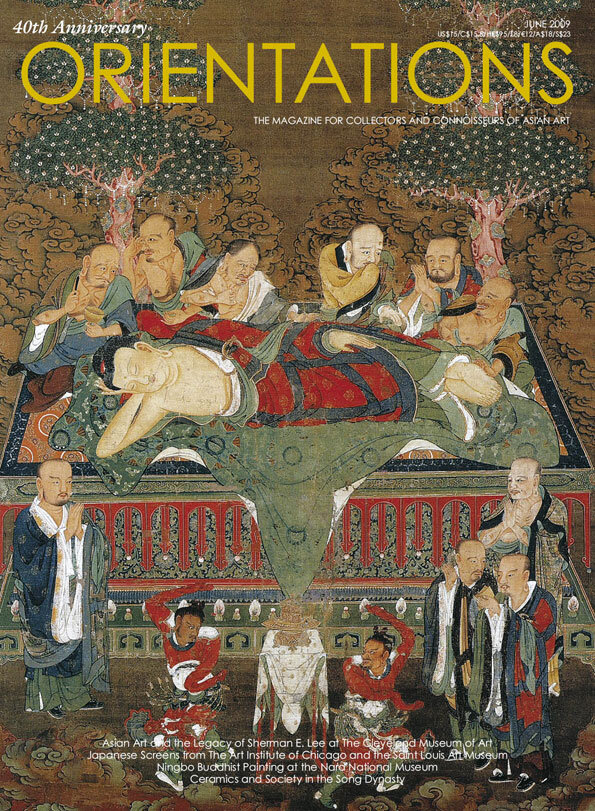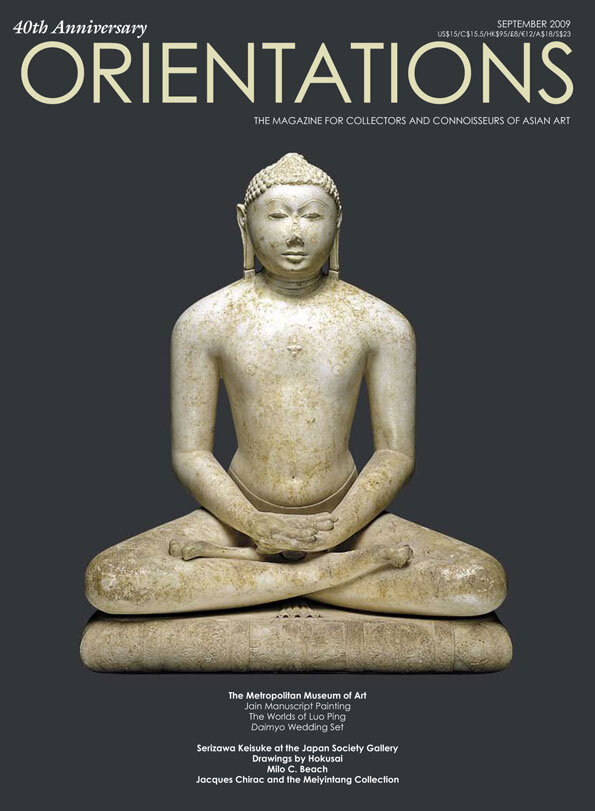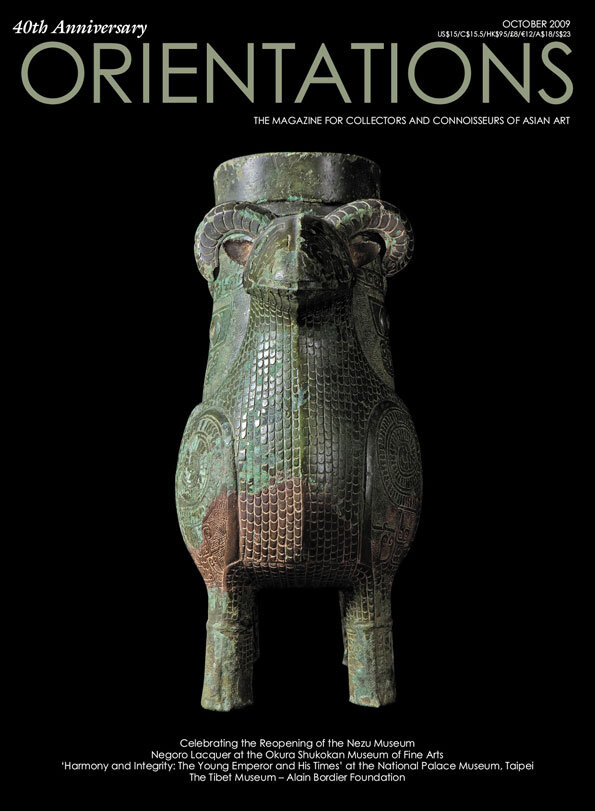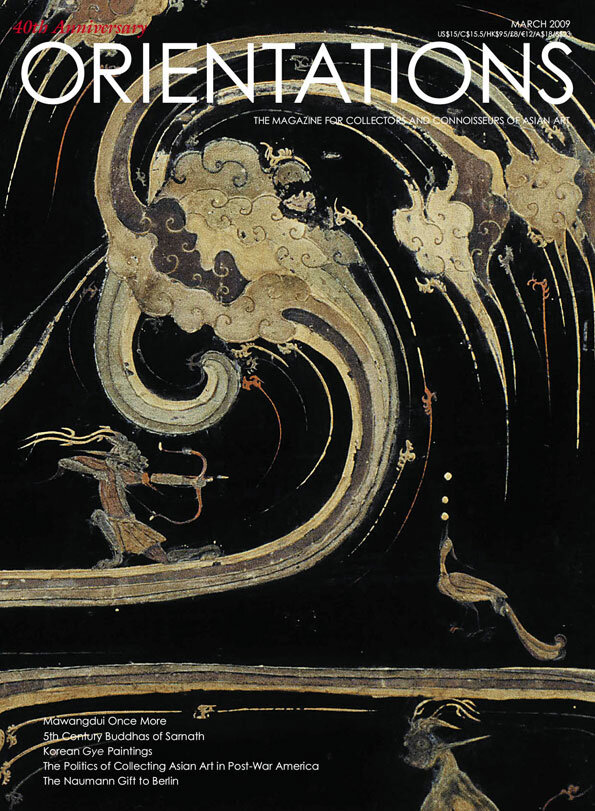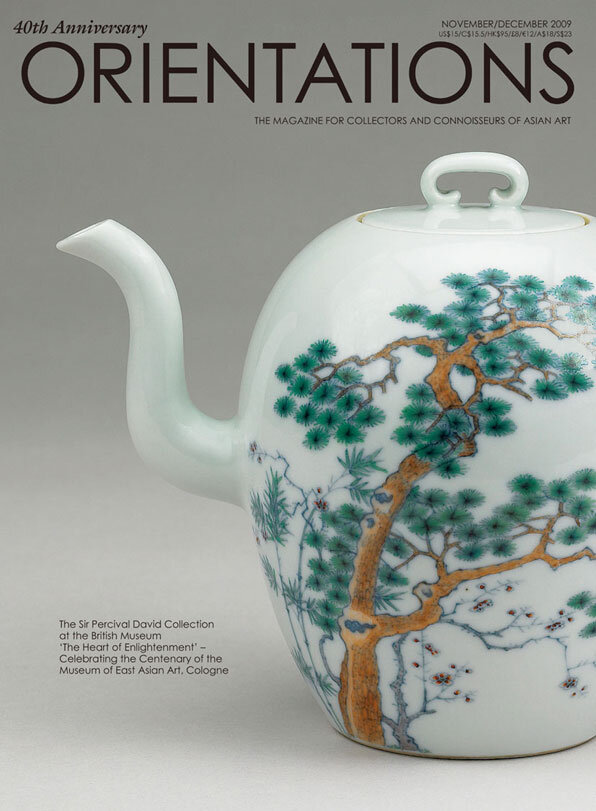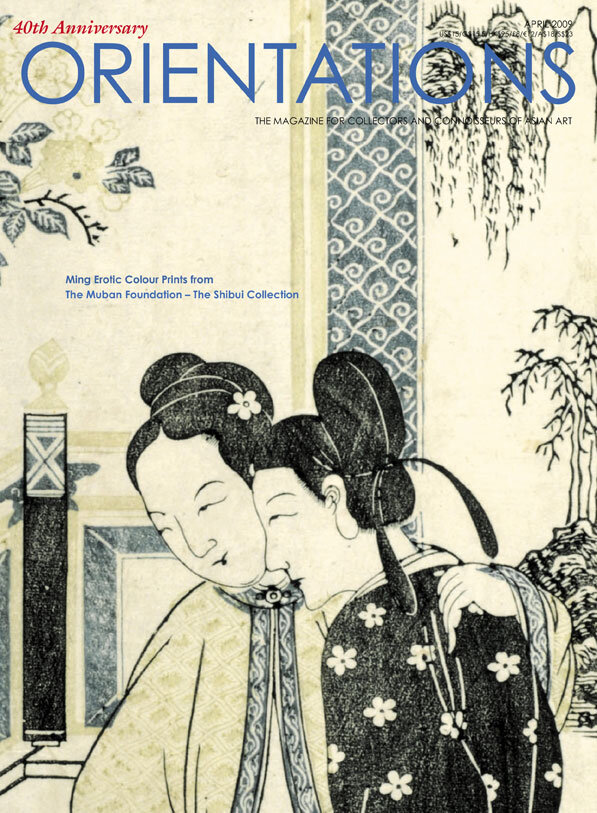 Image 1 of 1
Image 1 of 1


APR 2009
VOLUME 40 - NUMBER 3
Both as subject and as object, the colour-printed books that are our focus in this issue present challenges to current thinking about the erotic and the print, two relatively marginalized areas in the study of Chinese visual and social history.
As demonstrated by our contributors, the Muban Foundation's acquisitions of Japanese collector Shibui Kiyoshi's cache of late Ming erotic books, once thought lost, will offer opportunities for scholarship. Christer von der Burg, Sören Edgren, Wang Chao and Song Pingsheng discuss the bibliographic significant and technical advancements of these tomes. Craig Clunas and James Cahill offer different perspectives on positioning the erotic. While ukiyo-e prints are more widely known, Sebastian Izzard and Hiromitsu Kobayashi reveal how the Japanese were inspired by their Chinese predecessors. As seen in the work of Wilson Shieh, the subject of this month's interview, the erotic and the culture of print continue to provide artistic inspiration.
In this month's commentary, Yoko Hsueh Shirai traces the trajectory of a Buddhist statue in Japan, from a lost collection in the countryside to the auction rooms of New York.
FEATURES
Hiromitsu Kobayashi. In Search of the Cutting Edge: Did Ukiyo-e Artists Borrow from the Erotic Illustrations of the Chinese Fengliu juechang tu?
Sebastian Izzard. Shibui Kiyoshi: Pioneer in the Study of Ukiyo-e
Song Pingsheng. The Importance of the Fengliu juechang tu in Print History
Wang Chao. Notes on the Use of Pigments in Ming Woodblock Colour Prints
James Cahill. The Shibui Printed Books in Chinese and Japanese Erotic Pictorial Art
Craig Clunas. Looking at the Lewd in Ming China
Soren Edgren. The Bibliographic Significance of Colour-Printed Books from the Shibui Collection
Christer von der Burg. Chinese Colour Printing: 17th Century Examples in the Muban Foundation Collection
PREVIEWS & REVIEWS
Nancy Shatzman Steinhardt. Book Review: Ronald G. Knapp: Chinese Bridges: Living Architecture From China's Past, Tuttle Publishing, Tokyo, Rutland, Vermont and Singapore, 2008
Sylvan Barnet and William Burto. Book Review: Horyuji Reconsidered, Edited by Dorothy C. Wong, Cambridge Scholars Publishing, 2008
INTERVIEWS
Interview with Wilson Shieh
COMMENTARY
Yoko Hsueh Shirai. Commentary: The Shinnyo-en Dainichi Nyorai Attributed to Unkei's Workshop: How a Forgotten Icon Became a National Sensation in Japan
VOLUME 40 - NUMBER 3
Both as subject and as object, the colour-printed books that are our focus in this issue present challenges to current thinking about the erotic and the print, two relatively marginalized areas in the study of Chinese visual and social history.
As demonstrated by our contributors, the Muban Foundation's acquisitions of Japanese collector Shibui Kiyoshi's cache of late Ming erotic books, once thought lost, will offer opportunities for scholarship. Christer von der Burg, Sören Edgren, Wang Chao and Song Pingsheng discuss the bibliographic significant and technical advancements of these tomes. Craig Clunas and James Cahill offer different perspectives on positioning the erotic. While ukiyo-e prints are more widely known, Sebastian Izzard and Hiromitsu Kobayashi reveal how the Japanese were inspired by their Chinese predecessors. As seen in the work of Wilson Shieh, the subject of this month's interview, the erotic and the culture of print continue to provide artistic inspiration.
In this month's commentary, Yoko Hsueh Shirai traces the trajectory of a Buddhist statue in Japan, from a lost collection in the countryside to the auction rooms of New York.
FEATURES
Hiromitsu Kobayashi. In Search of the Cutting Edge: Did Ukiyo-e Artists Borrow from the Erotic Illustrations of the Chinese Fengliu juechang tu?
Sebastian Izzard. Shibui Kiyoshi: Pioneer in the Study of Ukiyo-e
Song Pingsheng. The Importance of the Fengliu juechang tu in Print History
Wang Chao. Notes on the Use of Pigments in Ming Woodblock Colour Prints
James Cahill. The Shibui Printed Books in Chinese and Japanese Erotic Pictorial Art
Craig Clunas. Looking at the Lewd in Ming China
Soren Edgren. The Bibliographic Significance of Colour-Printed Books from the Shibui Collection
Christer von der Burg. Chinese Colour Printing: 17th Century Examples in the Muban Foundation Collection
PREVIEWS & REVIEWS
Nancy Shatzman Steinhardt. Book Review: Ronald G. Knapp: Chinese Bridges: Living Architecture From China's Past, Tuttle Publishing, Tokyo, Rutland, Vermont and Singapore, 2008
Sylvan Barnet and William Burto. Book Review: Horyuji Reconsidered, Edited by Dorothy C. Wong, Cambridge Scholars Publishing, 2008
INTERVIEWS
Interview with Wilson Shieh
COMMENTARY
Yoko Hsueh Shirai. Commentary: The Shinnyo-en Dainichi Nyorai Attributed to Unkei's Workshop: How a Forgotten Icon Became a National Sensation in Japan

